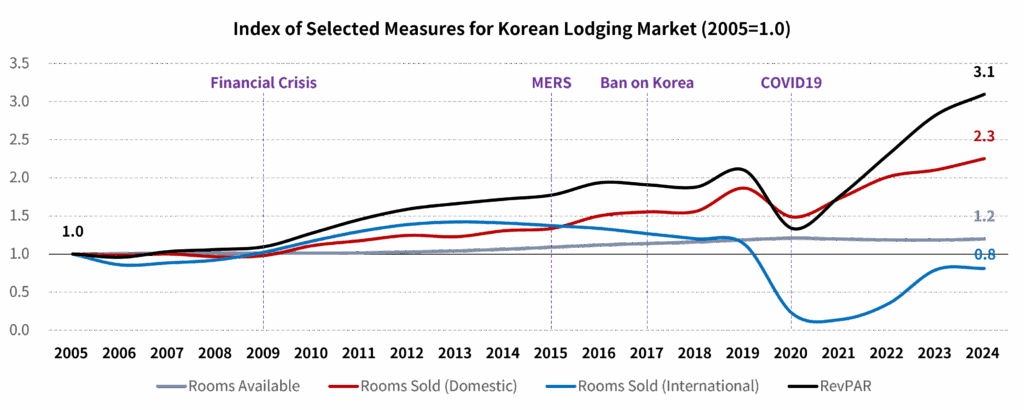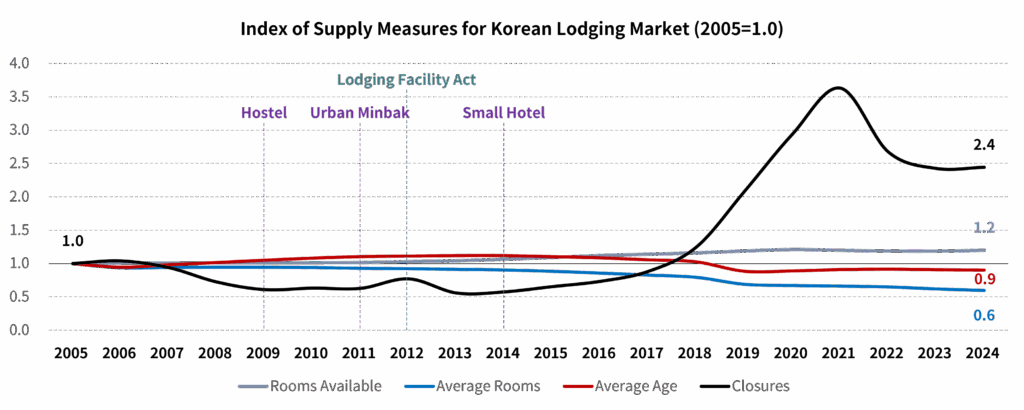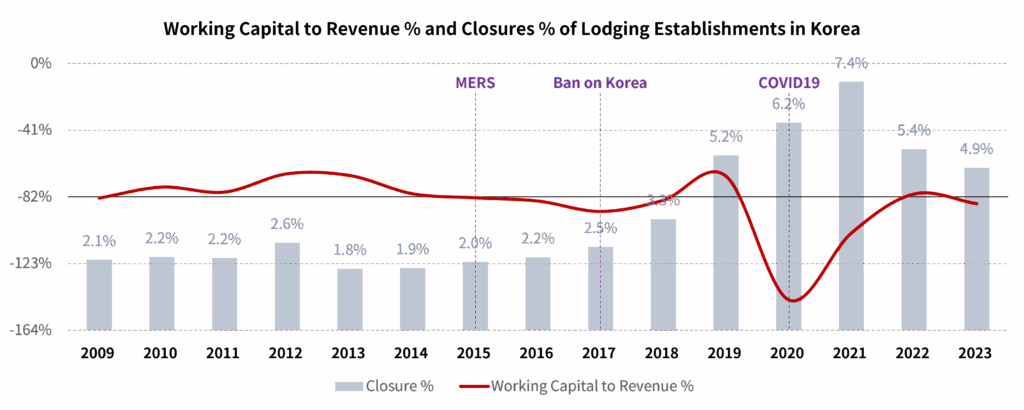Consulting > Consulting Approach
Consulting Approach
1. Inelastic Supply vs Elastic Demand
① Inelastic Supply
It typically takes 2–3 years to build a new lodging property, and another 2–3 years to reach break-even. After opening, the property produces the same volume of lodging products daily, and any unsold inventory cannot be stored. In other words, supply in the lodging market is inelastic.
This inelasticity of supply leads to cost inelasticity as well. For example, regardless of whether a room is sold, a minimum level of staffing is required to maintain basic cleanliness. As such, the proportion of fixed costs is high, and the ability to respond quickly to market changes is limited.
② Elastic Demand
On the other hand, room products are typically sold on a daily basis and through a wide range of distribution channels. Consumption patterns vary significantly depending on customer age, origin, destination, purpose of travel, and group size. In other words, demand in the lodging market is elastic.
This elasticity of demand translates into revenue volatility. For instance, the greater the share of foreign demand—highly sensitive to external factors—the sharper the rise in revenue during a boom, and the steeper the decline during a downturn.다.

Our asset management consulting focuses on building operational structures that can effectively respond to the dynamic shifts of the lodging market, thereby ensuring and sustaining long-term asset competitiveness. Our ultimate goal is to maximize the life cycle and asset value.
2. Economies of Scale vs Economies of Speed
① Economies of Scale
The most common way to ease the burden of high fixed costs in lodging businesses is to spread them through economies of scale. Enlarging a single property can reduce cost burdens but has limitations in absorbing revenue volatility.
A more advanced approach is to merge multiple lodging properties into a portfolio, thereby controlling revenue fluctuations at the portfolio level. However, even when ownership and management are separated and capital costs are optimized, there are limits to keeping up with rapid market changes.
② Economies of Speed
The rapid rise of Airbnb led to an increase in the supply of small-scale lodging properties using private homes, softening the inelastic nature of supply by shortening the time required for opening and stabilization. In Korea, rural and urban minbaks surged after 2010.
As supply inelasticity weakened, closures also became easier, and the average age of lodging establishments decreased. Shorter life cycles made it more difficult to secure funding, and properties with poor liquidity or weak financial health became more prone to early closure.

Our operational management consulting does not focus solely on increasing revenue or reducing costs in monetary terms. Rather, it emphasizes increasing revenue and reducing costs in ways that enhance liquidity and financial soundness, aiming to strike the right balance between operational stability and agility.
3. Bridging Inelasticity and Elasticity
① Flexible Pricing Strategy
The most common way to bridge inelastic supply and elastic demand is through pricing. This involves dynamically adjusting prices for a fixed supply of rooms according to demand fluctuations—essentially applying the law of supply and demand on a daily basis.
Such pricing strategies typically rely on multiple distribution channels. Since these vary by region and lodging establishment type, optimizing the channel mix is crucial—i.e., identifying the combination that yields maximum revenue at minimum cost.
② Short-Term Liquidity Management
The common method for buffering inelastic costs and elastic revenue is working capital. Working capital, defined as current assets minus current liabilities, is a key indicator of short-term liquidity. If current assets fall or liabilities rise beyond normal levels, the business faces a liquidity crisis.
In a world increasingly affected by uncontrollable events like MERS, the THAAD ban, and COVID-19, liquidity crises have become a leading cause of insolvency despite profitability. To respond effectively, it is essential to maintain adequate access to additional current assets.
③ Financial Soundness
The best way to ensure access to liquidity is to manage the debt ratio at an appropriate level. The debt ratio—liabilities relative to equity—is a key indicator of financial soundness. Ensuring and maintaining a healthy debt ratio is vital.
If long-term borrowing is used repeatedly to manage liquidity crises, the debt ratio rises, weakening a business's ability to respond to future shocks. In particular, during booms, if businesses pursue aggressive expansion instead of deleveraging, they risk asset deterioration in the long run.

Our financial management consulting focuses on building a financial structure that ensures and maintains both short-term liquidity and financial soundness, to buffer inelastic costs and elastic revenues. Our ultimate goal is to maximize resilience against increasing market volatility.

